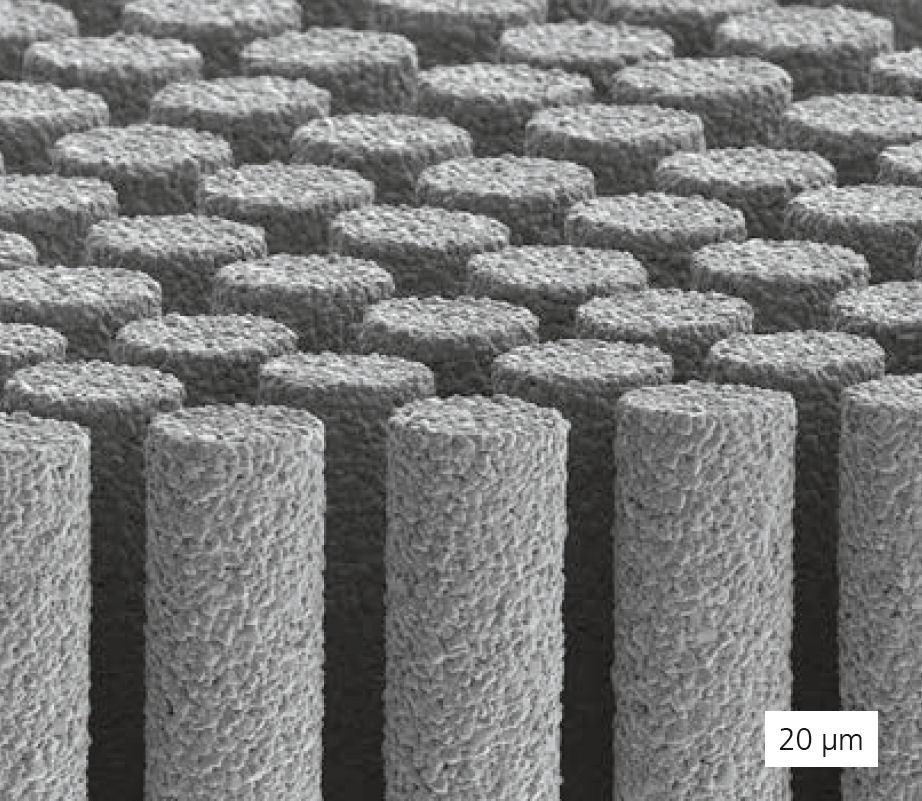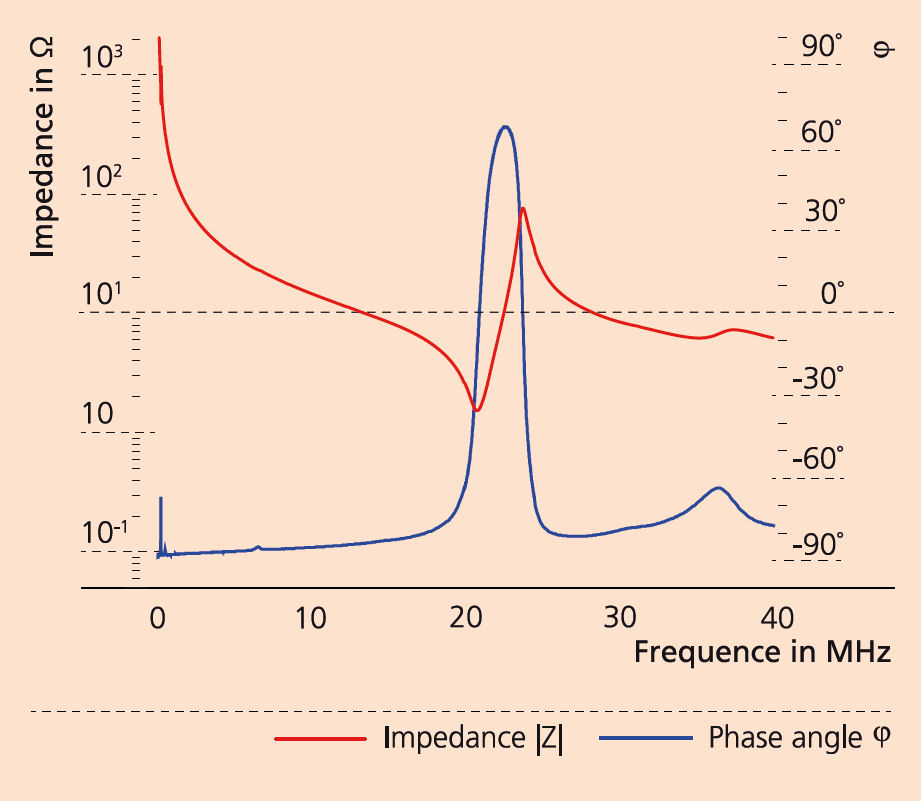Ultrasonic imaging plays an important role in medical diagnostics. The demand for more precise diagnosis requires higher resolution, which can only be obtained using high-frequency ultrasonic transducers with operating frequencies between 20 and 40 MHz. Since penetration depth decreases as the frequency increases, high-frequency ultrasonic transducers are suited in particular for near-surface or intracorporal imaging, for instance in the context of dermatological, ophthalmological or intravascular examinations.
1-3 Piezocomposites
1-3 piezocomposites of piezoelectric active ceramic rods embedded in a non-piezoelectric and elastic polymer matrix are advantageous when compared with single-phase materials because of their higher electromechanical coupling and thus higher sensitivity, bandwidth, as well as intermediate dielectric constant, lower acoustic impedance, and the ability to be formed into curved transducers. Moreover, phased-array transducers with acoustically separated elements can be manufactured easily by applying patterned electrodes.
Increasing operating frequencies means that the piezocomposite thickness needs to be reduced, while a smaller pillar geometry and pitch are necessary in order to shift spurious modes to uncritical frequencies. This results in great challenges for a reliable manufacturing process, which has to guarantee array structures with accuracies on the micrometer scale. To date, ultrasonic transducers with frequencies < 20 MHz are produced using the dice-and-fill method, which is too large-scale and thus insufficient for higher frequencies.
Soft mold process
The soft mold process developed at Fraunhofer IKTS enables the fabrication of markedly small-scale 1-3 piezocomposites via slip casting. Flexible intermediate molds made of silicone, into which a ceramic slurry is poured, are taken from an original mold produced through microstructuring. After drying, the green samples can be demolded and sintered. Advantages compared to dice-and-fill:
- Reusable master and soft molds
- High variety regarding pillar shape, size and arrangement
- Small pillar spacings
- Time- and effort-independent from array structure
As a consequence, the soft mold process allows for the costeffective fabrication of 1-3 piezocomposites for high-frequency ultrasonic transducers. Up to now, composites with round pillars in hexagonal arrangement enable ultrasonic transducers with operating frequencies of up to 30 MHz – compared with the 15 to 20 MHz realized with conventional methods. In the near future, even converters with > 40 MHz will probably be possible.


